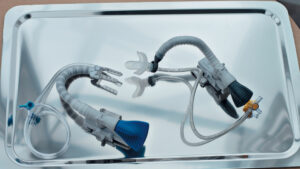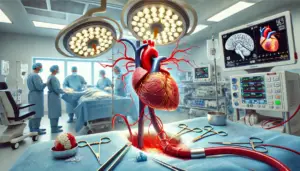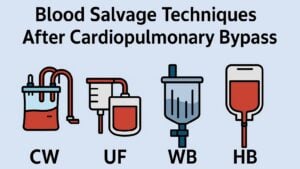Perfusionists are healthcare professionals who are expertly trained to manage heart-lung machines during open-heart surgeries. They are also skilled in operating auxiliary devices, including cell saver machines and intra-aortic balloon pumps. The path to becoming a perfusionist involves various educational and training requirements.
Educational Pathways and Requirements:
Undergraduate Training:
- Perfusion programs generally require 60 to 80 credit hours of pre-professional coursework or a bachelor’s degree in a relevant field. This coursework often includes sciences like organic chemistry, physics, and anatomy.
- The U.S. has about 18-19 schools offering perfusionist programs at multiple levels: certificate, bachelor’s, and master’s degrees.
- Bachelor’s programs, suitable for high school graduates or those without formal degrees, involve extensive coursework in liberal arts and sciences, with specific prerequisites in key scientific subjects.
- These programs typically take four years for full-time students and culminate in eligibility to take the certification exam set by the American Board of Cardiovascular Perfusion.
Post-Baccalaureate Certificate:
- Designed for individuals with a bachelor’s degree, these one-year programs blend classroom learning with practical training.
- They provide an accelerated pathway for healthcare practitioners, such as medical assistants, nurses, or paramedics, to transition into perfusion science.
Master’s Degree:
- This pathway requires a bachelor’s degree and certain prerequisites in advanced science courses, including biochemistry and microbiology.
- A two-year program, it consists of one year of classroom education and another year of clinical rotations across multiple hospitals.
Career Prospects and Considerations:
- Graduates from all these programs are qualified to take the American Board of Cardiovascular Perfusion certification exam.
- Job opportunities and compensation are generally consistent across different educational levels, though some specialized roles may require a master’s degree.
- For international candidates, U.S. certification necessitates completion of an accredited program within the U.S. or Canada. Previous training abroad is not recognized for certification purposes in the U.S. This means that you MUST attend an Accredited Perfusion School here in the United States or Canada to work here even if you are a perfusionist in another country.
This comprehensive approach ensures that perfusionists are well-equipped with both theoretical knowledge and practical skills necessary for their critical role in surgical teams. For more detailed information on specific programs and requirements, it’s advisable to consult the official websites of the educational institutions offering these courses.
Other Resources:
Perfusionists are healthcare professionals who are expertly trained to manage heart-lung machines during open-heart surgeries. They are also skilled in operating auxiliary devices, including cell saver machines and intra-aortic balloon pumps. The path to becoming a perfusionist involves various educational and training requirements.
Educational Pathways and Requirements:
Undergraduate Training:
- Perfusion programs generally require 60 to 80 credit hours of pre-professional coursework or a bachelor’s degree in a relevant field. This coursework often includes sciences like organic chemistry, physics, and anatomy.
- The U.S. has about 18-19 schools offering perfusionist programs at multiple levels: certificate, bachelor’s, and master’s degrees. Bachelor’s programs, suitable for high school graduates or those without formal degrees, involve extensive coursework in liberal arts and sciences, with specific prerequisites in key scientific subjects. These programs typically take four years for full-time students and culminate in eligibility to take the certification exam set by the American Board of Cardiovascular Perfusion. Post-Baccalaureate Certificate: Designed for individuals with a bachelor’s degree, these one-year programs blend classroom learning with practical training. They provide an accelerated pathway for healthcare practitioners, such as medical assistants, nurses, or paramedics, to transition into perfusion science. Master’s Degree: This pathway requires a bachelor’s degree and certain prerequisites in advanced science courses, including biochemistry and microbiology. A two-year program, it consists of one year of classroom education and another year of clinical rotations across multiple hospitals. Career Prospects and Considerations: Graduates from all these programs are qualified to take the American Board of Cardiovascular Perfusion certification exam. Job opportunities and compensation are generally consistent across different educational levels, though some specialized roles may require a master’s degree. For international candidates, U.S. certification necessitates completion of an accredited program within the U.S. or Canada. Previous training abroad is not recognized for certification purposes in the U.S. This means that you MUST attend an Accredited Perfusion School here in the United States or Canada to work here even if you are a perfusionist in another country. This comprehensive approach ensures that perfusionists are well-equipped with both theoretical knowledge and practical skills necessary for their critical role in surgical teams. For more detailed information on specific programs and requirements, it’s advisable to consult the official websites of the educational institutions offering these courses. Other Resources: American Board of Cardiovascular Perfusion What is the Career Outlook for Perfusionists How Much is Cost to Attend Perfusion School The Career Evolving Landscape for Perfusionists The Manual of Clinical Perfusion







